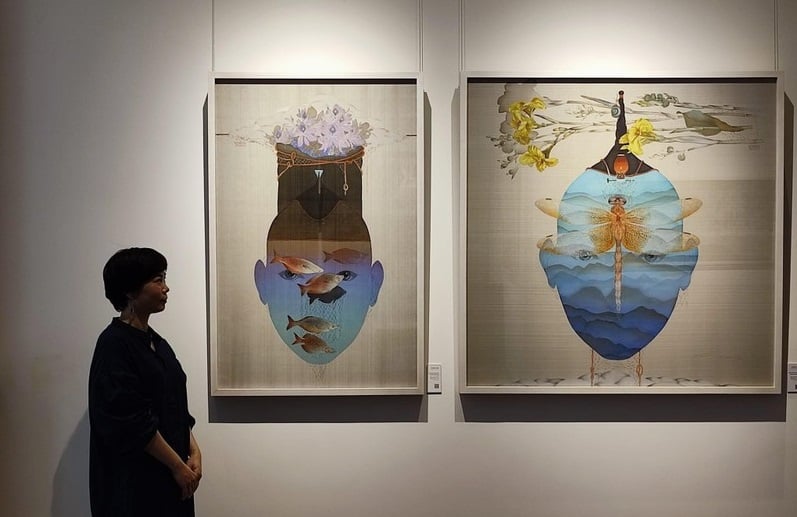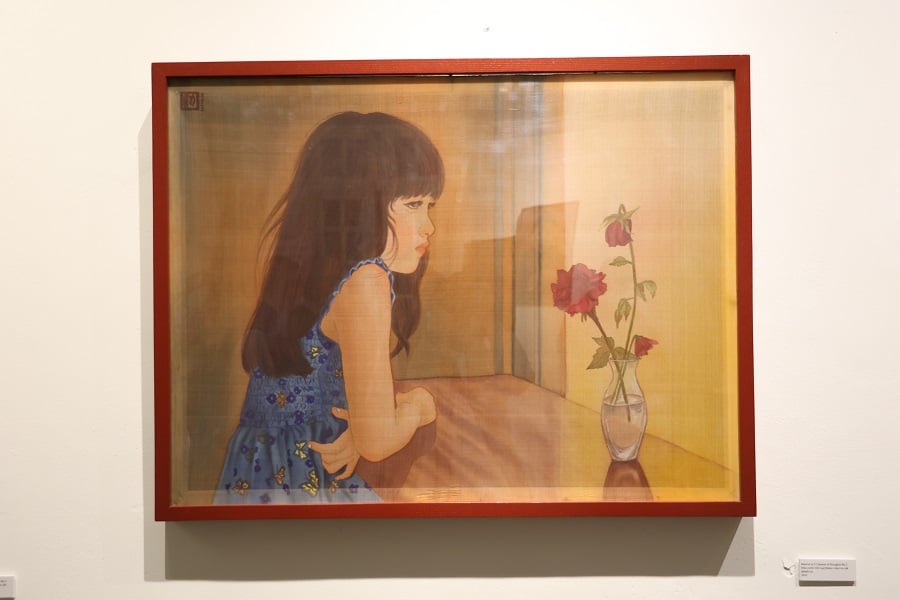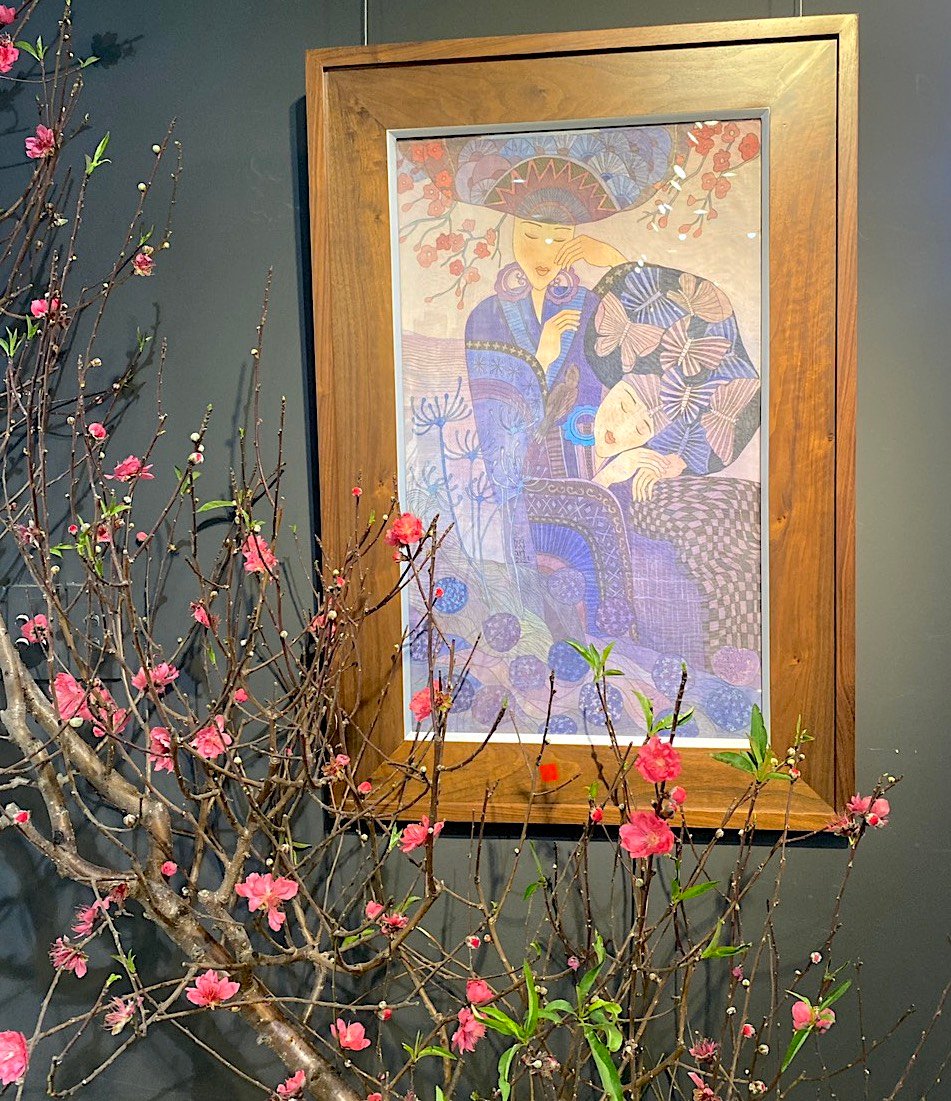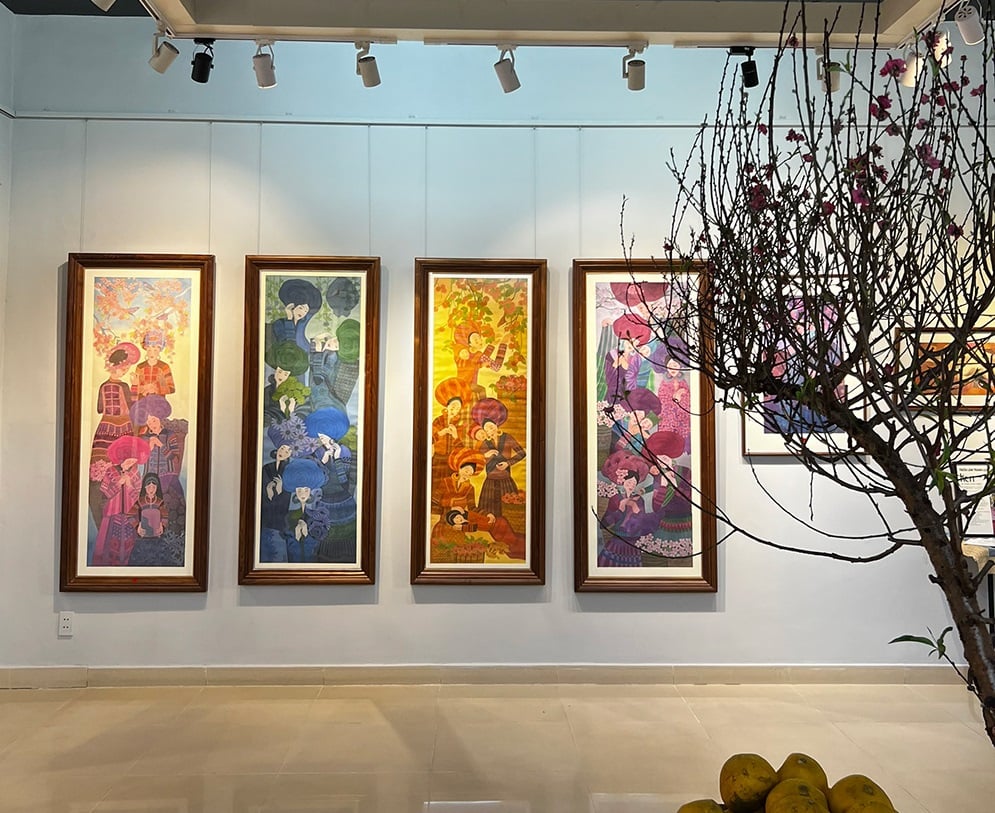
Vietnamese silk painting is a treasured art form that encompasses centuries of cultural heritage and artistic expression. Rooted in tradition yet constantly evolving, Vietnamese silk art has captivated audiences with its fluid lines, harmonious colors, and intricate details. In this guide, we will explore the history, characteristics, and notable Vietnamese silk painting artists, delving into its rich history and cultural significance.
1. Things to learn about Vietnamese silk painting history
Vietnamese silk painting is believed to have originated during the reign of the Ly Dynasty and Tran Dynasty. However, most of these works have been lost. The ones we have left do not date as far back.
Modern silk painting is often attributed to Nguyen Phan Chanh, who drove its rise to popularity in the 1930s. Throughout the years, silk painting Vietnam has evolved and developed distinctive characteristics.
>>> Read more: Van Phuc Silk Village: The traditional beauty of a craft village in Hanoian
2. What defines Vietnamese silk painting characteristics?
A notable characteristic of Vietnamese silk painting is the fluid brushstrokes that add a sense of movement and dynamism to the artwork. Unlike rigid lines in other art forms, Vietnamese silk painting uses soft flowing strokes to show the elegance and accentuate the fluidity of silk as a medium.
Another key characteristic of Vietnamese silk painting is the use of soft and muted colors, evoking a harmonious and balanced composition. Fine attention to detail is another characteristic of Vietnamese silk painting. Intricate patterns showcase the dedication and craftsmanship involved in creating these paintings and elevate them to another level of refined beauty.

2.1. Types of silk used in Vietnamese silk painting
In the past, the most common type of silk used by silk painters in Vietnam was the handmade silk from Quan Pho Village. Today, Vietnamese silk paintings are made of factory-produced silk, which is specialized for painting, bearing characteristics like being sparse and thin.
2.2. Traditional techniques of silk painting in Vietnam
- Silk preparation: This process begins with washing and stretching the silk on a wooden frame to create a smooth and even surface for painting.
- Design and sketch: The artist then sketches on the silk using a pencil or charcoal.
- Outlining: After the sketch is complete, the artist uses a thin brush and black dye to outline the main features of the painting.
- Coloring: The artist then applies colors to the silk using brushes. Traditionally, natural dyes from plants, minerals, and insects were used.
- Adding finishing touches: Once the painting is complete, details and highlights are added. Gold or silver leaf, for instance, may be included as decorative accents.
- Mounting: The silk is carefully detached from the frame and mounted onto a backing material. Typically, the edges are folded over and glued to the backing so the final artwork is clean and neat.

>>> Read more: Hang Gai Street (Street of Hemp): A haven for high-quality silk products
3. The main themes and values of Vietnamese silk painting
- Nature and landscapes: Vietnamese silk paintings often depict scenic landscapes, which convey a deep appreciation for the country's natural environment and reflect the harmony between people and nature in Vietnamese culture.
- Portraits: Vietnamese silk painting also features portraits with a focus on elegance and grace. These artworks capture the essence of the subjects, highlighting their individuality and prompting a connection with the audience.
- Mythological and historical themes: Vietnamese silk painting draws inspiration from mythological and historical narratives, creating pieces that depict legendary figures, heroic tales, and folklore. These artworks convey the stories passed down through generations and instill a sense of pride and reverence for the country's history and cultural identity.

4. Notable Vietnamese silk painting artists and their contributions
- Nguyen Phan Chanh: Chanh played a significant role in promoting and popularizing silk painting as a recognized art form in Vietnam. “Nguoi hat rong,” “Bua com,” and “Nhung co khau dam,” are among his most notable creations.
- Nguyen Gia Tri: Tri was another talented artist in the early stages of silk painting in Vietnam. His silk paintings were displayed at the first National Fine Arts Exhibition held at Hanoi Opera House.
- Luong Xuan Nhi: Nhi was also a Vietnamese artist worth mentioning. His silk pieces were known for being imbued with natural colors. Two of his best paintings are “Gia dinh nha chai” and “Nhung co tho theu.”
- To Ngoc Van: Van was one of the later Vietnamese silk painting artists. He layered bold, broad strokes over bright backgrounds, giving the silk canvas a new sense of freedom. Some of his most famous pieces are “Buoi trua,” “Thieu nu ben hoa hue,” and “Hai thieu nu va em be.”

To further explore the natural and cultural heritage of Vietnam, you should embark on a Vietnam travel adventure. From the bustling streets of Hanoi to the pristine beaches of Phu Quoc, Nha Trang, and Da Nang, and the breathtaking landscapes of Ha Long and Hoi An, Vietnam offers a diverse range of experiences that will immerse you in the country's history and natural beauty.
To commemorate your experience, don't forget to bring home some silk Vietnam souvenirs. These will serve as a lasting reminder of the rich cultural traditions and craftsmanship that make Vietnamese silk art so remarkable.
While in Vietnam, make sure that you stay at Vinpearl’s hotels and resorts. With impeccable services, breathtaking locations, and world-class amenities, Vinpearl will perfectly complement your exploration of Vietnam's natural and cultural treasures. A visit to VinWonders will also allow you to continue your journey with discovery and fun.


>>> Book rooms in Vinpearl Phu Quoc, Vinpearl Nha Trang, Vinpearl Resort & Golf Nam Hoi An, Vinpearl Resort & Spa Ha Long for your adventures in Vietnam!
Vietnamese silk painting is a treasured art form that embodies the delicate beauty, cultural richness, and artistic mastery of Vietnam. With its flowing lines, muted colors, and incredible craftsmanship, it has captivated audiences and served as a bridge between tradition and innovation. Vietnamese silk painting continues to enchant and inspire, preserving the country's cultural heritage and captivating the world with its timeless elegance.
























